This is a guest post, republished from Plan Design Xplore with permission.
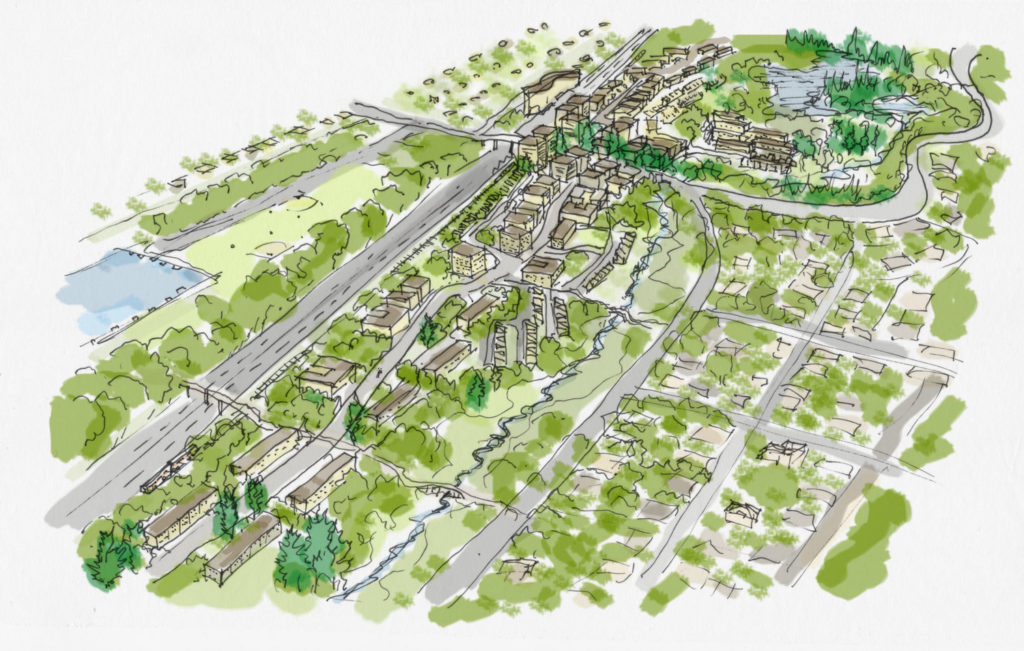
Over the last week, news stories in The Oregonian and the Portland Tribune have raised the issue of Portland’s public golf courses’ financial insolvency. It so happens that we’ve been mulling over the idea of redeveloping these properties for some time. As golf declines in popularity, redevelopment is becoming increasingly attractive to cities nationwide.
All else being equal, we’d rather not see these places change. But larger forces are gathering and so we’re putting this proposal out there to frame the inevitable discussion around the things we believe are necessary to preserve livability: visual continuity, public ownership, tree preservation, public green space, and of course, beauty.
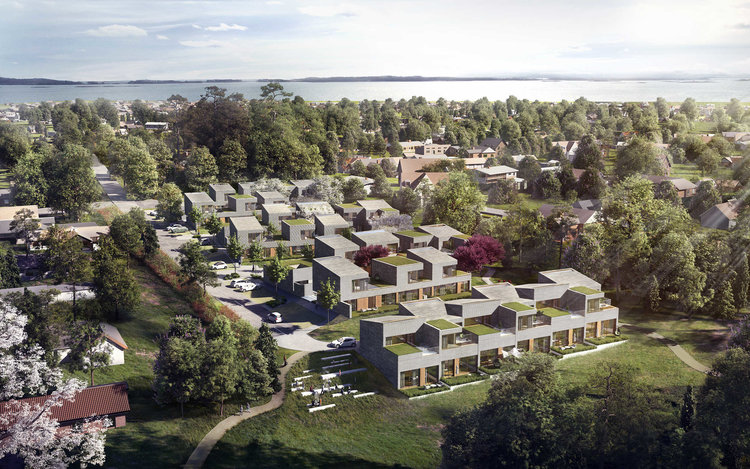
Just looking at the numbers, it’s tempting to take a maximum density approach and pack as many units as physically possible onto these sites. However we believe that a city designed by spreadsheet is not a city we want to live in. We have to recognize the value of the beauty these spaces hold and the wonderful break from the grid of the city. The open space of these courses also offers opportunities for multiple forms of active recreation, from cycle-cross to running, to adventure parks with climbing and zip line courses like this one we found while exploring Potsdam, near Berlin.
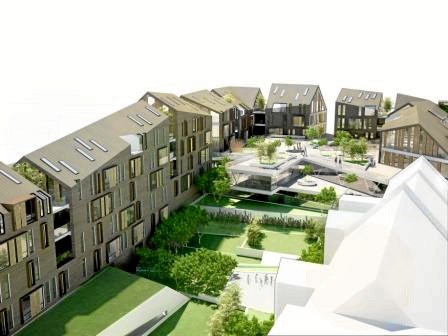
Golf courses can also provide valuable ecological services including hosting pollinators and native plants and absorbing storm water. The 80 acre Oregon Garden occupies a former golf course near Silverton, and now boasts an extensive landscape garden as well as providing a home for Oregon’s only Frank Lloyd Wright building, the Gordon House.
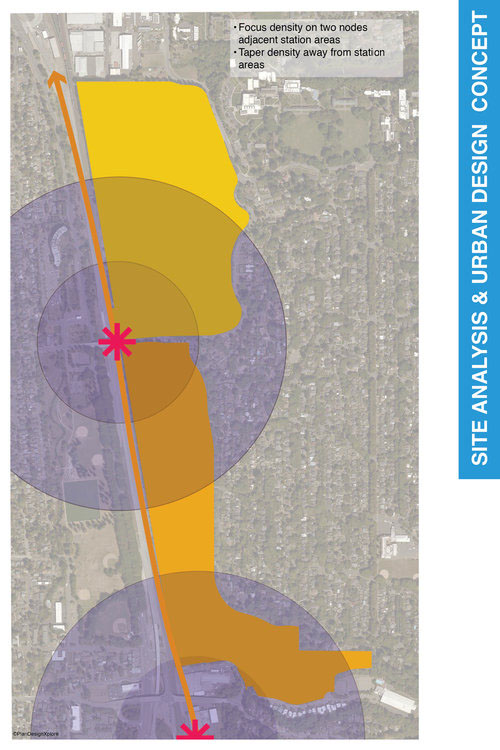
A plan for redeveloping Portland’s golf course properties would have to balance the need for additional housing with the other benefits the open space can provide to the community at large. We took the Eastmoreland Golf Course for a test case. It’s adjacent to two light rail stations, and thus a good candidate for additional housing units. As one of us is a Reed alumnus, we’re sensitive to the neighborhood’s attachments to the open space and the beauty of the site, as well as how it enhances the surrounding community, and our design takes that into account. We think this plan, or something similar, if accepted, is worth a guarantee to the neighborhood that it can stay single family in perpetuity (with ADUs, of course) and place a permanent moratorium on demolitions. Quid pro quo is only fair. We’re completely sympathetic with neighborhood concerns and this would be entirely consistent with our general approach of balancing preservation with strategic infilling where appropriate.
The municipal courses, are of course, publicly owned, and we believe the land should stay publicly owned. The city can allow development on parcels created in the property with 99 year ground leases. The thing about land is, they’re not making any more of it, and the city should not just sell it off out of expediency.
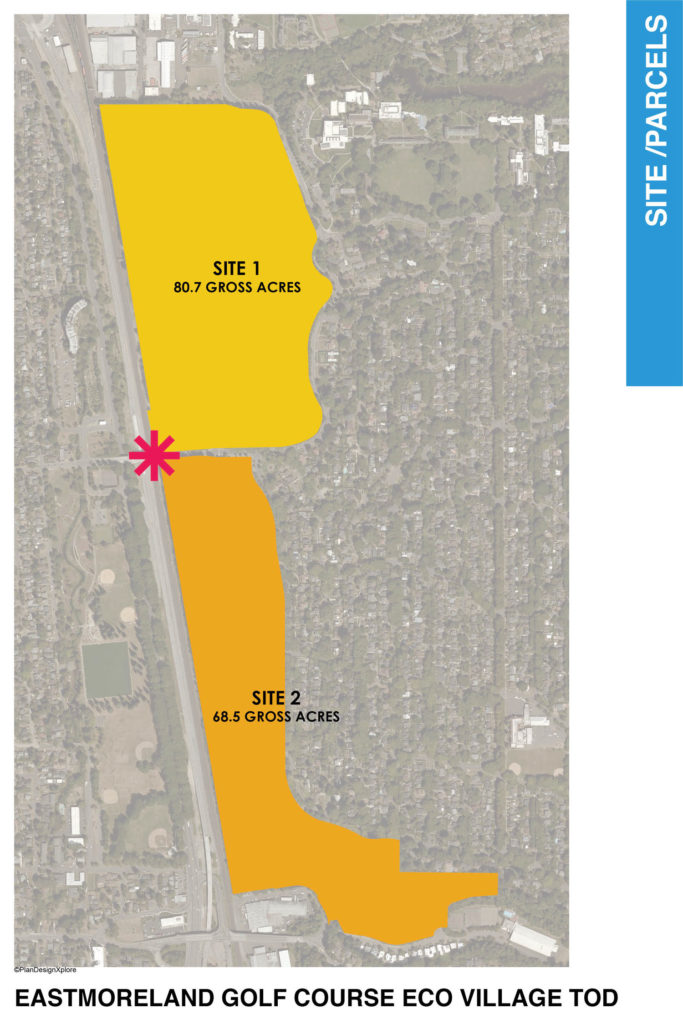
The design aims to maximize housing opportunity while providing publicly accessible green spaces, maintaining and enhancing the parkway character of SE 28th, minimizing negative impacts to surrounding neighborhoods and providing natural storm water management for the site and adjacent community. We began by establishing a parkway about 280’ wide along the existing eastern edge. This matches the block dimensions of the neighborhood to the east. This area would be completely free of development and would include trails and amenities. It would also provide drainage from the western portion of the site which gets very wet in the winter. Visually the experience of SE 28th should be unchanged from how it appears today.
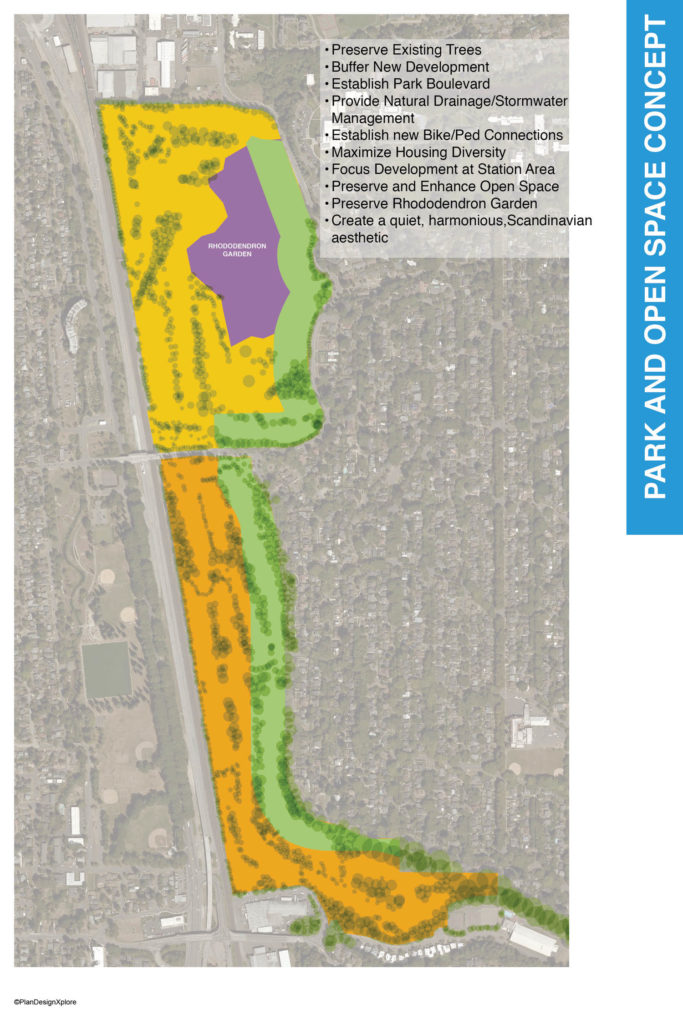
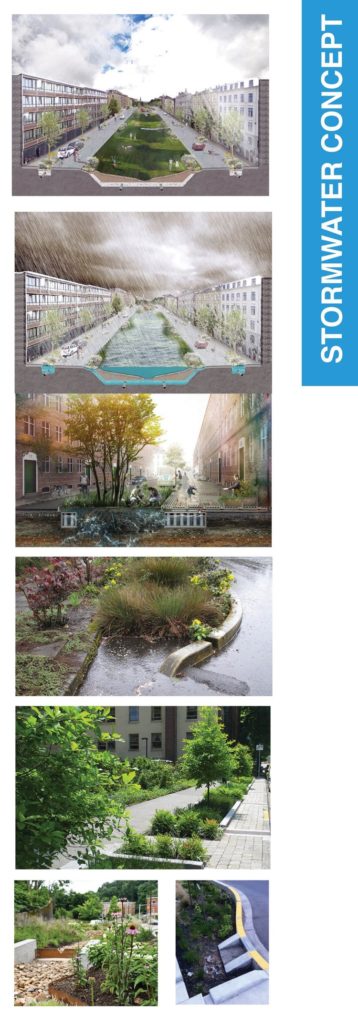
Taking this concept further, we envision diverting all the uphill storm water from the neighborhood into a seasonal swale or creek running the length of this parkway and connecting to the existing crystal springs creek. Our design prioritizes tree preservation, placing all development in existing fairways. We envision an extensive bike/ped network through the site including two new bike/ped crossings over McLaughlin Blvd. Finally, we’ve provided a suggestion about the architecture, favoring a quiet, subdued Scandinavian aesthetic resembling the neighborhoods we found around Copenhagen and Malmö. Finally, we would not touch the Crystal Springs Rhododendron garden, which is a true treasure to the whole region.
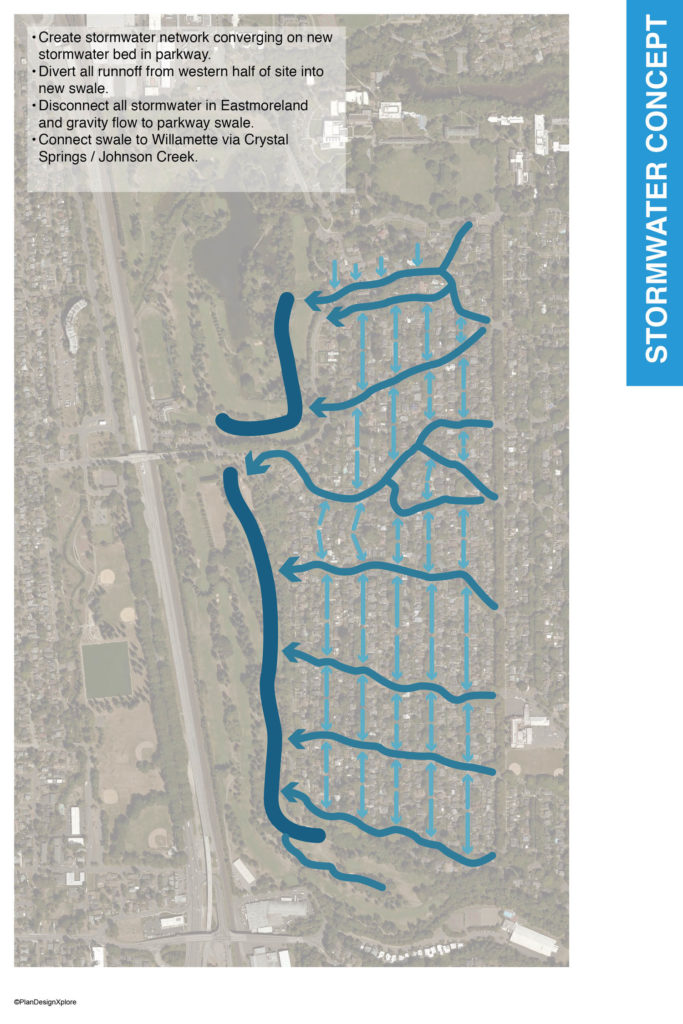
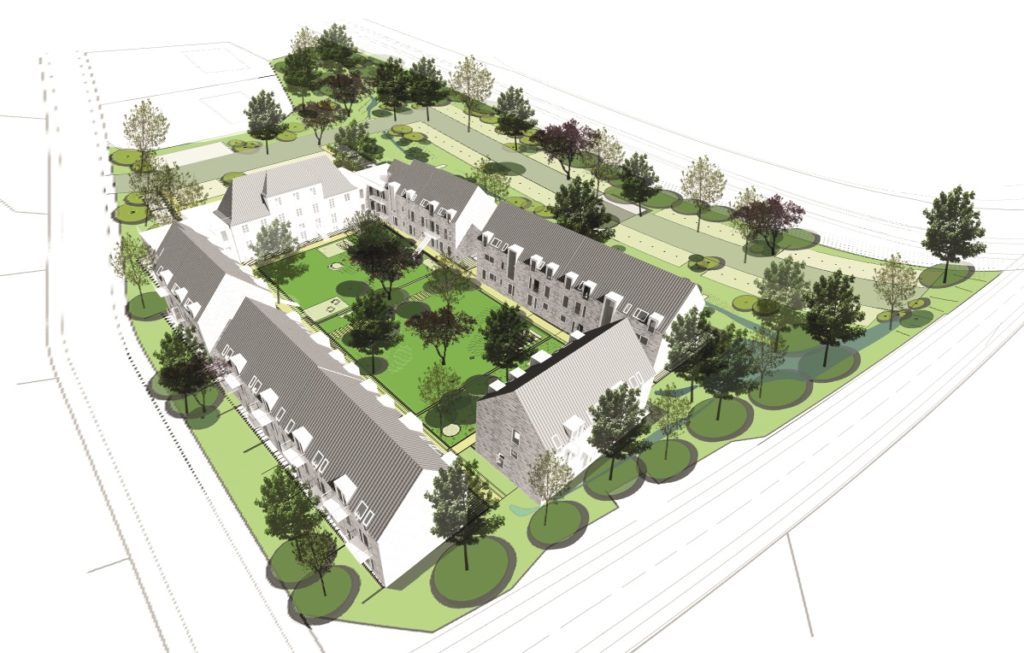
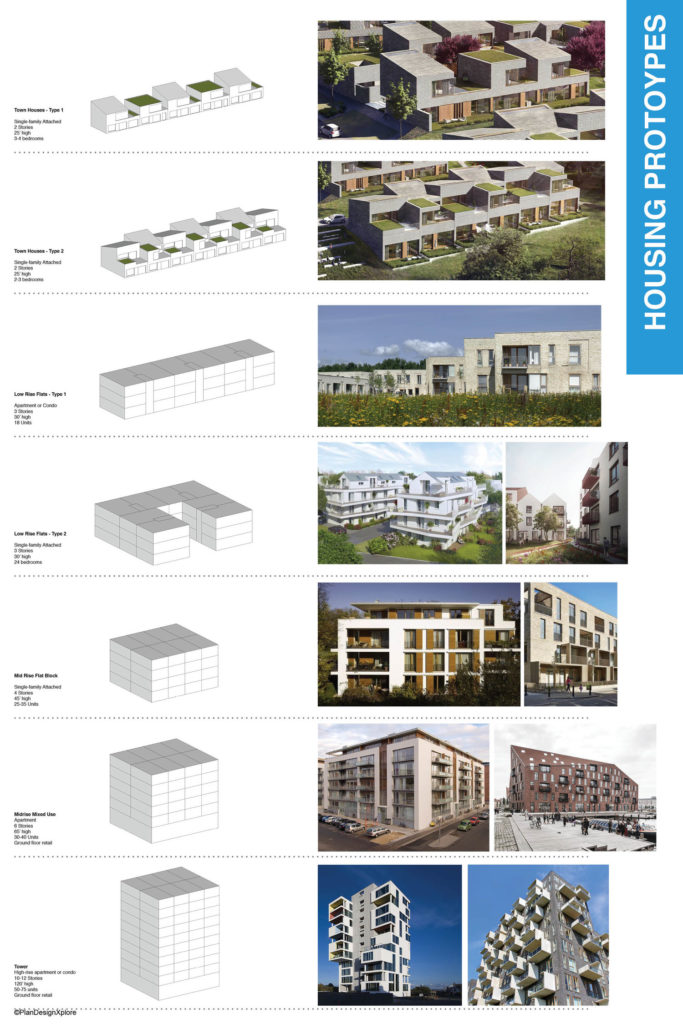
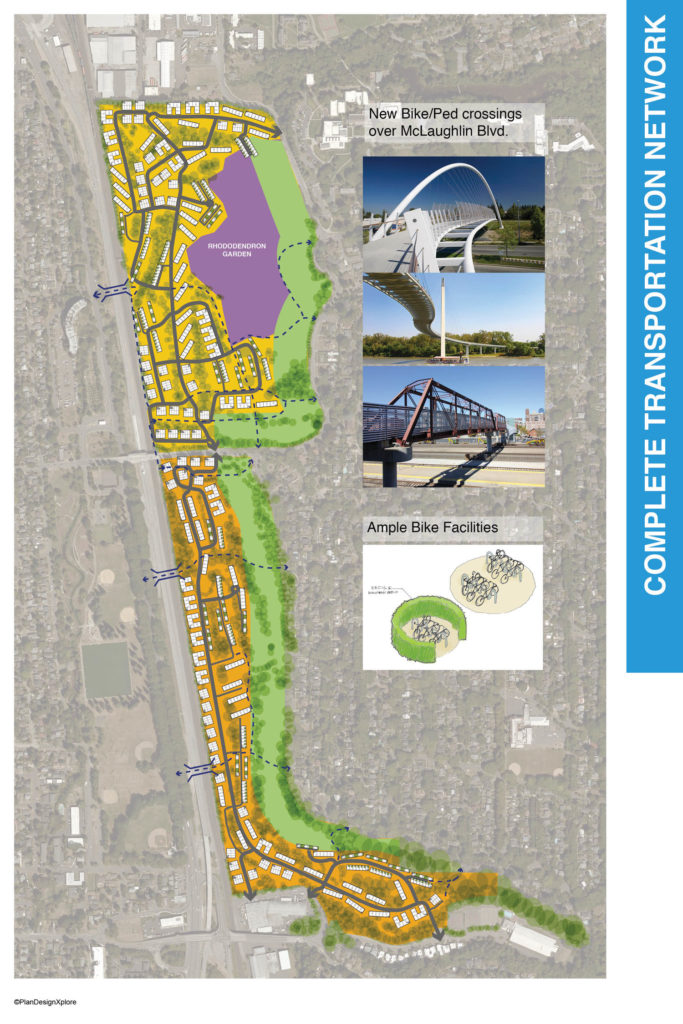
We set out to achieve a high level of density, aiming for 40 dwelling units per acre.
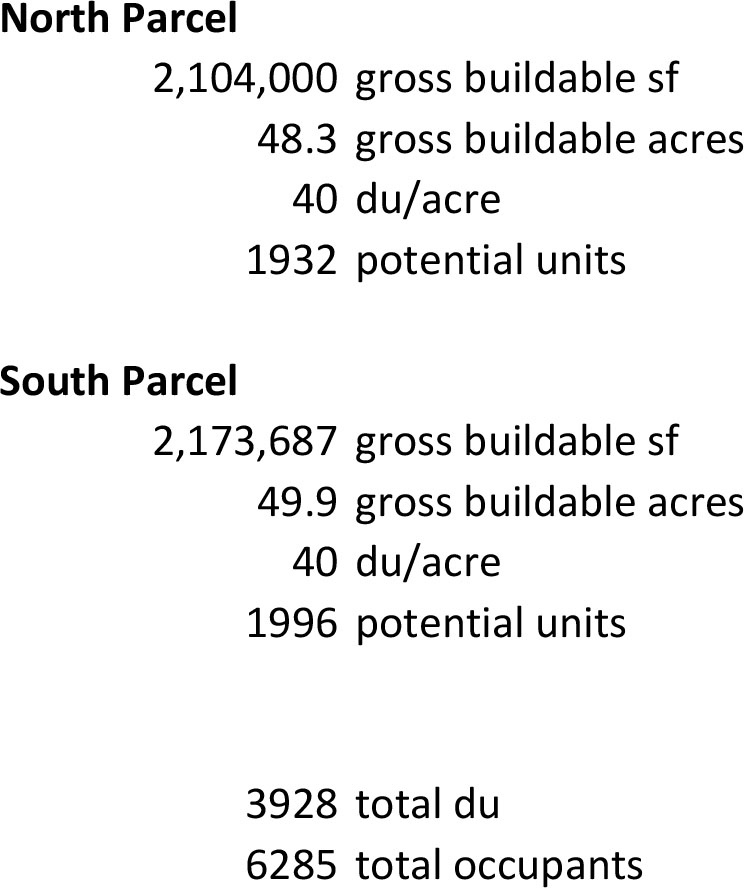
And here’s where we ended up:
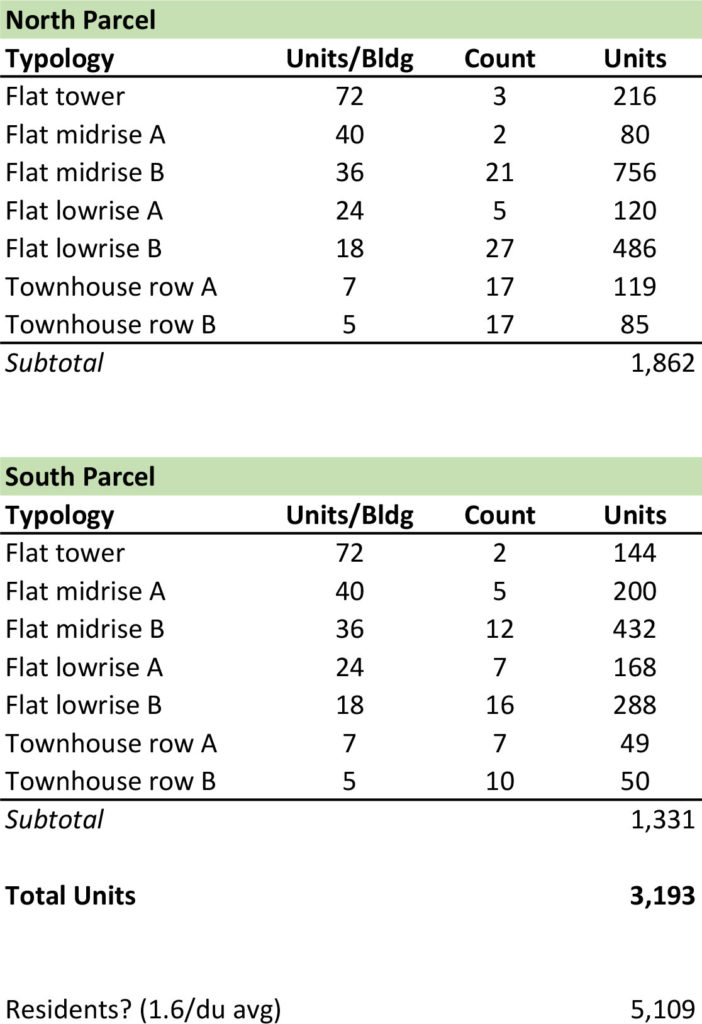
Given some time and budget, we’d love to develop this into a REAL concept. That would entail a few sample block drawings and some street sections, indicating how pedestrians and cyclists would experience the neighborhood. We’d also like to flesh out the program for public amenities and the incorporation of housing at a wide range of price points, including fully subsidized units. We will try to return to this in a future post, as time permits. For now, consider this a conversation starter and an overture to a dialogue on the future of this public resource.
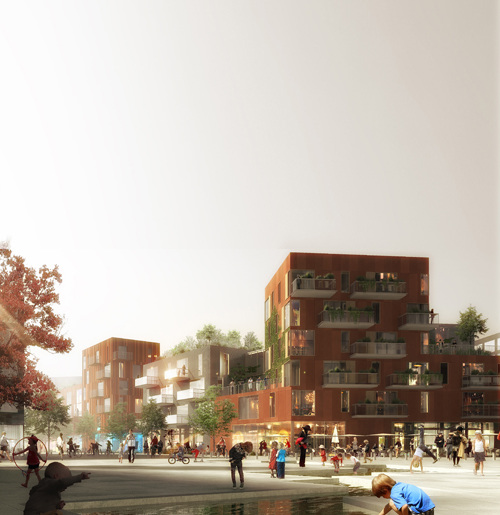
We’ve gone as far as some rough modeling of how typical blocks could work. Here are a few examples of how the bits should work together:
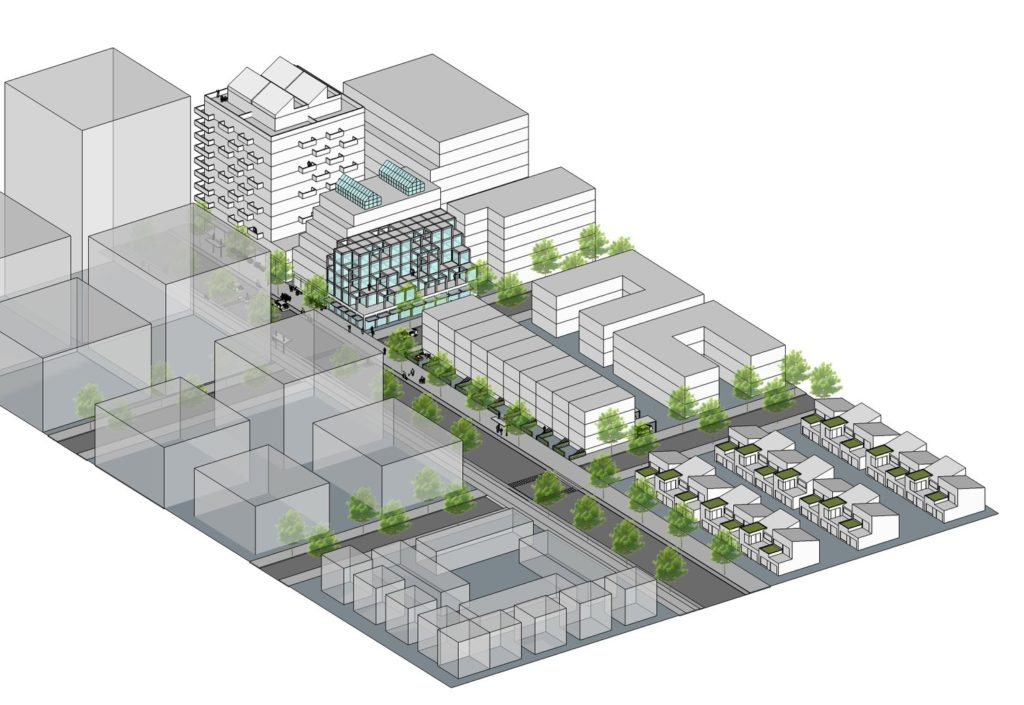
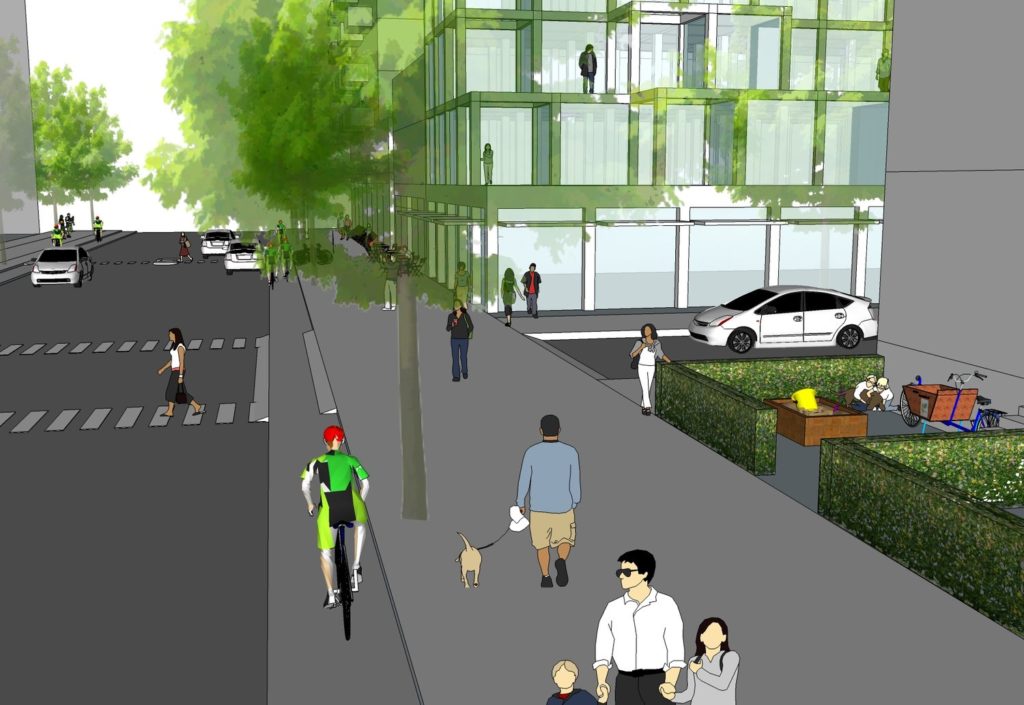
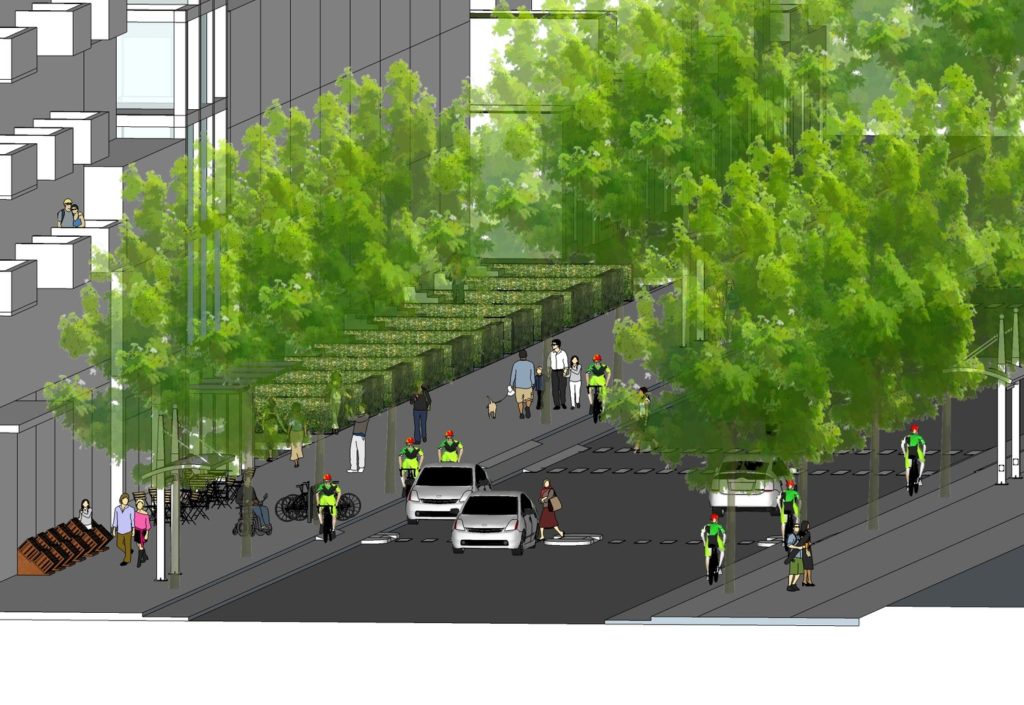
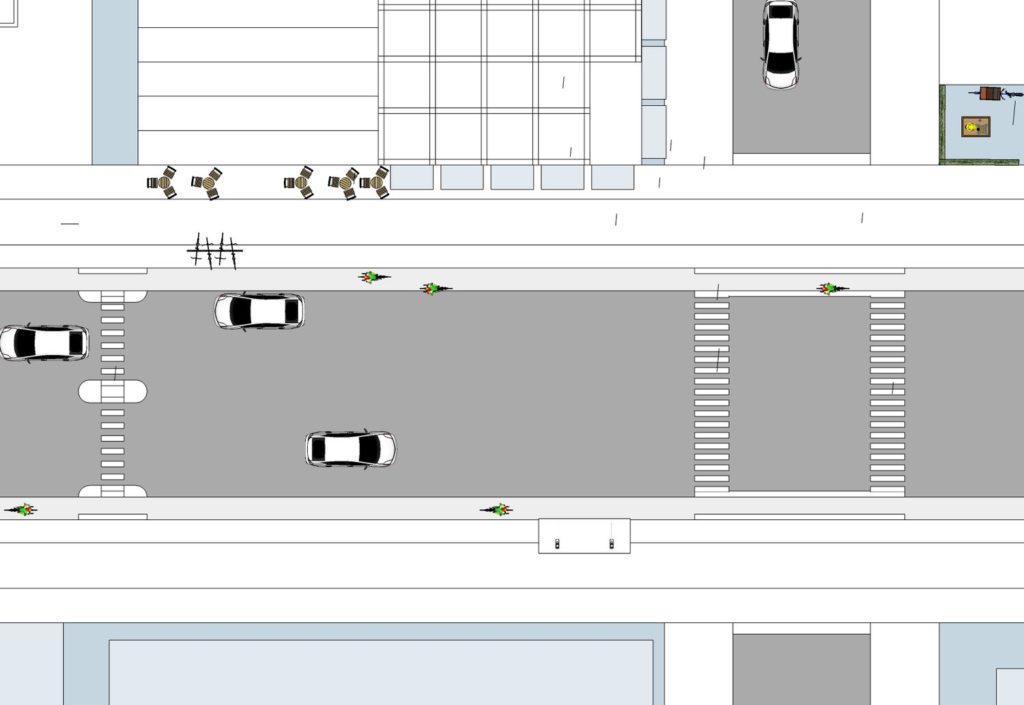
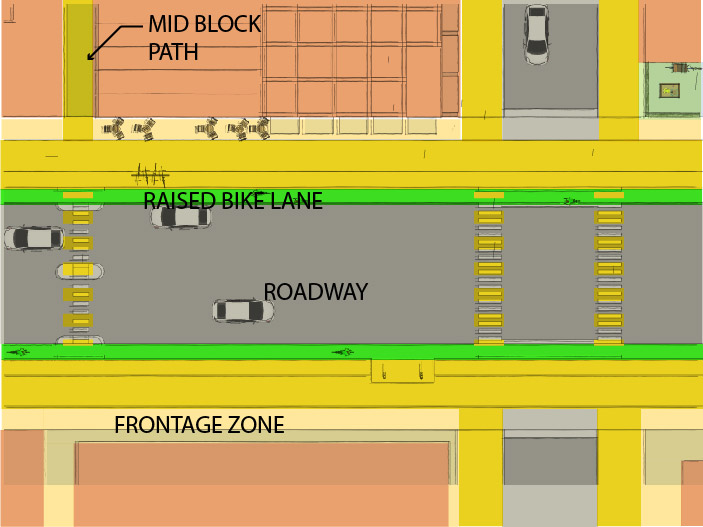
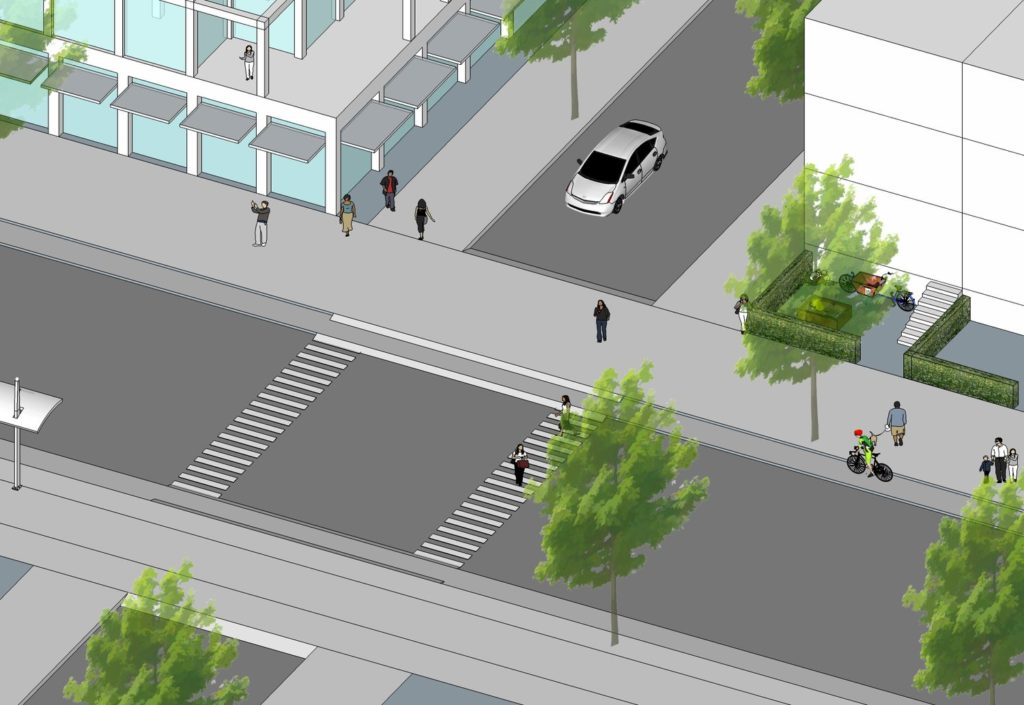
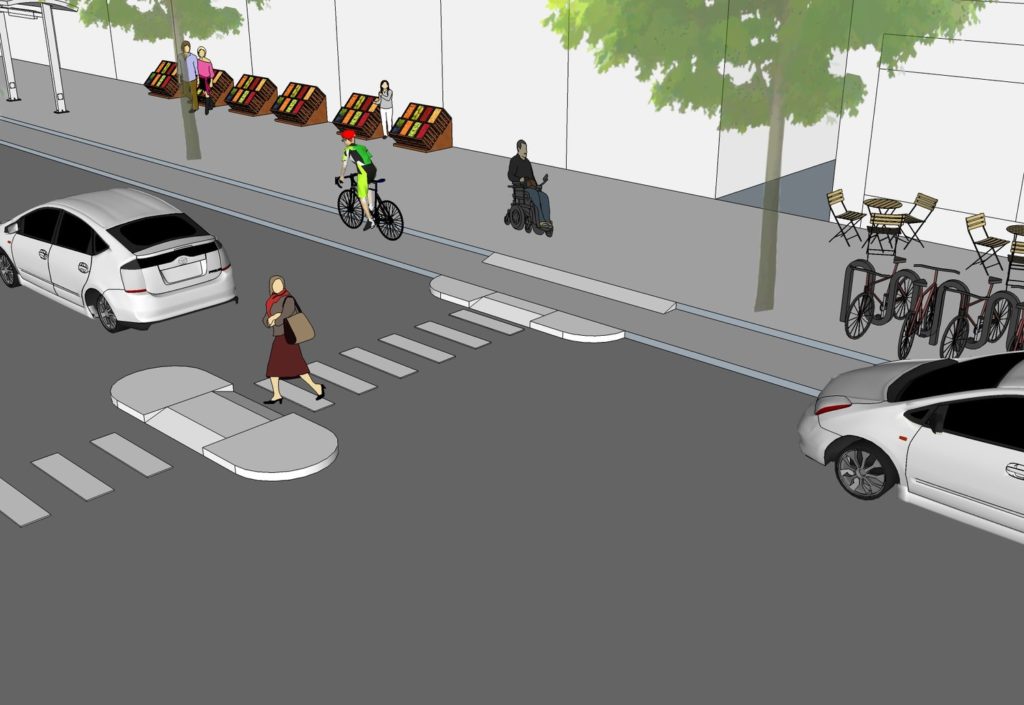
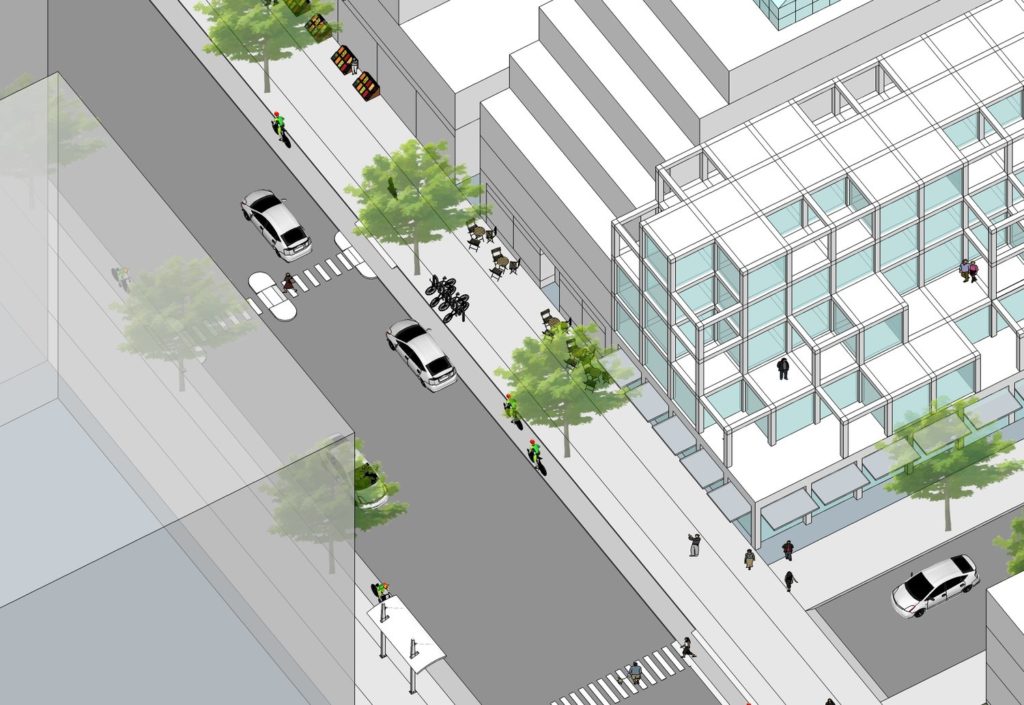
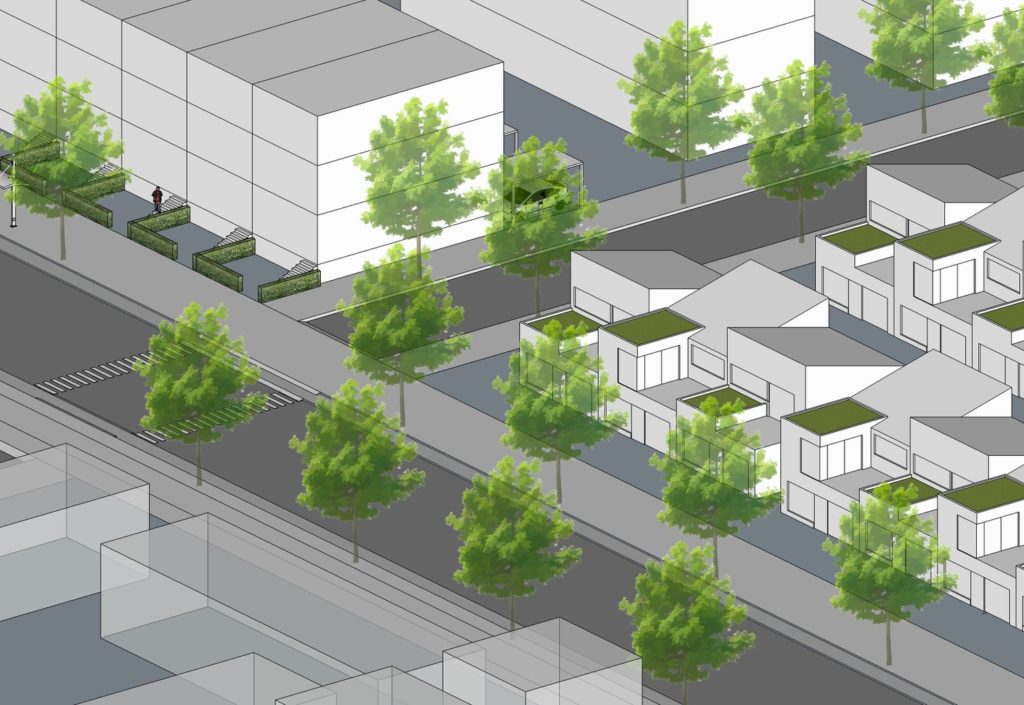
Taking one more cue from the Danes, we’d like to see places like this include features that make them complete neighborhoods like the ones we saw around station areas in Copenhagen. That means including daycare, supportive housing for people with mental mental health and developmental disabilities, and subsidized housing for people with low incomes or fixed incomes (i.e. elderly pensioners). All these things fit seamlessly into those communities and made them truly inclusive places.
Read the original post here at Plan Design Xplore.
I think the idea of redeveloping the golf courses is a good idea as long as there’s a very generous amount of open space preserved. The nimby neighborhoods will scream loudly to be sure but we need the housing. Since the city owns the absence of land costs can greatly assist in the generation of worker and affordable housing.
IF Eastmoreland Golf Course goes away, the City should consider expanding the Crystal Springs Rhododendron Garden to completely surround Crystal Springs Lake, and put a new garden entry close to the Bybee Street MAX station.
Decades ago, Lambert Gardens provided Portlanders with a stunning 30-acre public garden near Reed College. Sadly, the gardens were demolished for apartments around 1970 because the City refused to save them. Portlanders lost something irreplacable there … except, as it turns out, we COULD replace it perhaps 50 years later with part of Eastmoreland Golf Course.
So why NOT use half of site one for an expanded public garden?
Someone spent a great deal of time on this article when they should have spent time researching who owns the land. The City of Portland does not own the land. The golf course sits on land owned by the Ladd Family Trust and if it is not used as a golf course it reverts to the Ladd Family. Tri-Met already had this idea and thought they were going to put high density housing on the golf course.
The ownership of the land doesn’t have any impact on the merits of the idea. It just means the Ladd Family Trust would be heavily involved with the planning, and would get a lot of money from developing and/or selling the land if the plan goes forward.
The City of Portland DOES own the land.
Source: I’m in title insurance
I tend to agree to expand our public gardens and parks as we grow. There is something about the ‘city in a garden’ or ‘city in a forest’ feel that helps bring the human scale back to our cities. I’m not opposed to high density housing, just that at the end of the day cities, like suburbs, or any place, are built for people, not for anonymous individuals that should be content to be stacked on top of each.
Obviously this idea can go disastrously in the ‘Towers in the Park’ schemes of the 50s and 60s, but I would argue that the main issue is the lack of walkability and street life led to its failure. If we promote walkability, bikability and density, but also intersperse gardens and green space, I believe we can build an approachable, and ultimately livable cityscape. After all, Portland is famous for its gardens–can’t our city planning make a nod to that rich heritage?
On a bit of a non-sequitur: The Crystal Springs idea would be a fantastic one and logical at that (I’ll leave the landownership details aside). Sometimes though I feel the city planners have some sort of commitment to aim for the middle and not stand out. I do wish the city would think more ambitiously in turning Crystal Springs into a premiere botanical garden among other ideas.
When we have the opportunity, right on a max line to build something with real density we want to propose suburban style housing? Maybe if we utilized some of the available land, we wouldn’t need to shove 4 plexes into established neighborhoods.
I have always thought of Oregon planning as a civic compact: citizens agree to live more densely in return for protected forests and parks. We densify our cities in exchange for robust parks and successful transit. Portland and Oregon have gone of the rails trying to be attractive to big businesses/developers and preserve and prolong the status quo with cars use. The fact that we had to make a massive cut to the PP&R budget in this time of massive urban expansion is proof that we are doing it all wrong. We should doubling our investments in building parks and supporting all of the programming they do. We should expanding our parks network, especially the riverfront trails (NPGreenway?). And we should be be taking about removing the freeways, not expanding them!
I would much rather see municipal golf courses turned into parks minus golfing, rather than “empty land” on which to build (admittedly much needed) housing. For example not just this course but Rose City Glendover would make wonderful Central Park style parks. Portland should not consider reducing the amount of green space we have but working hard to preserve it while maximizing already-built lots that can be converted to multi-resident housing.
Far too much new roadway and suburban-style development. I’d focus development on larger buildings adjacent to Bybee and Tacoma (12+ stories), and potentially running a single one-way, one lane road adjacent to the railroad tracks with a protected two-way bikeway and generous sidewalk (a new 26th Ave?) between Tacoma and Reedway, allowing for 7-story apartments lining that street. That street could connect to Bybee at SE 27th Ave, and to Tacoma from the existing SE Tacoma Street/Berkeley Place connection (upgraded to signalized intersections). Maybe could extend Knapp, Rex, or Lambert to provide additional connectivity.
Convert the remaining land to parkland/trails/stormwater. Add in new access to the Bybee MAX station (on the north end of the station; also bridging over to the west), and ultimately a wider sidewalk and two-way protected bike lane on the south side of Tacoma connecting to the MAX access. Include the new bike/walk crossings of the tracks and McLoughlin as proposed. Maintain all trees adjacent to tracks (minus wherever the new crossings of the track would go), and plant any additional trees needed to provide a continuous treeline separating the whole area from the tracks.
I’d also be okay with converting the whole course to a Central Park-style park (minus the roads), including some new soccer/baseball fields, playgrounds, etc.
The diverse and divergent comments responding to this post should foster some sympathy for how hard it is for Portland civic leaders to chart a course for Portland’s growth. Some complain that the above proposal, which would accommodate a towns-worth of new residence WITHIN existing neighborhood boundaries, is too suburban and should be more decidedly dense. Others complain that the proposal converts green space to housing that should, instead, be kept in a park-like condition, such as Central Park. There is no making a choice here that won’t anger some.
Writing for now of only the Central Park idea, I certainly agree that green is good and helps to define Portland at its best. But I don’t think turning over all of Eastmoreland Golf Course to parkland is its best use for several reasons. First, it is not central. Central Park works for many reasons, but very importantly because it is central, surrounded on all sides by extremely dense neighborhoods a short walk or ride away. The center of Eastmoreland Golf Course is, in fact, less than one mile from Portland’s southern boundary. Second, I’d much rather see capital investment that new development generated put to use in creating more local parks in underserved neighborhoods so the the benefits of parks and recreation were more democratically distributed. To be clear, I’m not saying the total amount of green space should be reduced, but that it should be redistributed more fairly. Third, there are already three substantial parks that serve that part of the city: Westmoreland Park, Crystal Springs Rhododendron Garden, and Tideman Johnson City Park. And fourth, Portland luckily already has a number of enormous parks for those wishing urban escape within the city: Forest Park (450 acres bigger than Central Park), Powell Butte Nature Park, Kelley Point Park, Smith and Bybee Lakes Natural Area, and Mt. Tabor.
Again, I am not suggesting that all of the course be converted to housing, but I do agree with the thrust of the post. This is a great opportunity to thoughtfully add housing, including affordable housing, to Portland near a train station in a way that would make it easier for people to forego driving. And since the portion that would remain green would be parkway rather than a golf course, it would be more widely used by the public, the great majority of whom do not play the game and are now excluded from picnicking, walking, or frolicking on the courses.
parks space should not require hopping in the car and driving to the big park. We need parks. Smaller parks, where people are. Parks that people pass on a regular basis and could easily stop in. We absolutely do not need to add to the congestion with people traveling to a park.
Spot on
Dumbass idea. Loss of benefits of green and open space does not justify an imbalance of building. And when the developers start foaming at the mouth to over build and destroy the inherent beauty of nature that this city plan was founded on the city will continue to evolve to look like and live like a piece of crap.
Westmoreland park is literally across the street and is quite large. Would you rather have a place to live, or be forced to sleep in a park because there isn’t enough affordable housing? Easy choice
Carson your response is another example of exploiting the homeless as an excuse for the destruction of the beauty and fabric of our city. Really? Have any of these projects really contributed to the homeless derelict population that now has more credence than the tax paying RESPONSIBLE members of society. They dont WANT to live in an ordered society and are incapable of doing so. GET REAL. So yeah lets keep using them as an excuse for the developers to build pieces of crap, destroy our natural environment while laughing all the time lining their pockets with profits made at our expense from the real estate market fiasco that they created. Maybe its also time to get serious about increasing the urban growth boundary instead of continuing to screw up what remains in our city.
RH,
I’m not against parks, I’m not against homeless people. I’m FOR affordable housing. If at least 30% of these units are affordable, it’s a win for this community. The project is retaining your trees, and the rhododendron garden. So, the only thing we are losing is a bunch of grass (which consumes a crap ton of water btw). And since you love grass so much, you can walk across the street to Westmoreland Park.
You must realize that these parcels are HUGE, we can have ample open space AND housing in the same place. I’d like you to keep an open mind and consider possible change. You assuming they are going to build “pieces of crap” is unfortunate. I think the renderings look beautiful.
Increase the urban growth boundary?! And destroy irreplaceable farm land and natural habitat for animals? We need to live more densely and utilize the land in the most efficient way possible. The main reason why this golf course is going to be developed is because it sits right next to a MAX line that is brand new, underserved and is only 10 minutes from the central city. Those are two highly desirable qualities for dense development that don’t exist anywhere else.
Actually the proposal builds on the fairways of the golf course, and keeps the majority of the trees. It keeps the Rhododendron Garden, and allots a large, 100′ deep buffer all along the eastern boundary of the current golf course. It places various densities (the lowest of which is attached row houses) throughout the site, with the highest density appropriately placed near the LRT stations. You won’t get a contemplative park next to the highway and railroad line. This is a better plan than turning the whole thing into an underutilized park, across the road from an existing park.
Did I miss the “affordable housing promise”? Who will be able to afford this? More pillaging by Mr. Sebastian? If only we could trust the plans… dismayed in PDX
Eastmoreland Golf course is an historic treasure and should be left alone by all of you. It is the most popular municipal golf course in the City and is fully self supporting financially. Golf may not be as popular as it once was, but once the course is gone, it is gone forever. The RIP plan will provide the additional housing units needed for a larger PDX population that works. The homeless are another issue. The cost to build housing on golf course property would most certainly not be affordable housing. The short-sightedness of the proponents of this vision for EMGolf property is staggering.
Totally agree
This a very interesting proposal, but since I do not live in Portland, I will confine my thoughts to Crystal Springs Rhododendron Garden, CSRG, as it is mentioned several times in both the proposal and comments.
First I would suggest that everyone learn about the history of the Garden, see http://www.rhodies.org/xstl/xstl_about.htm . In a search for the Garden you will note that it is also known as Portland’s Secret Garden. I am constantly surprised at the number of people I meet who have never heard of the Garden although they have lived in the area all their lives.
CSRG is a joint venture between the Portland Chapter American Rhododendron Society, PCARS a 501 (C) 3 nonprofit, and the Portland Parks Department. Parks owns the land, provides services such as toilet maintenance, garbage disposal, large tree removal and a number of other things. Their work is very important to the Garden. However, all of the improvements in the Garden are provided by PCARS. The gatehouse, paths, waterfalls, fountains and other infrastructure was constructed by PCARS. All the plants were purchased or donated and installed by PCARS. All this at no cost to the city taxpayers. When a retaining wall fails, as did two did recently, PCARS payed for the repairs. When the bridges needed replacing many years ago, PCARS paid part of the cost although they are the Parks Department’s responsibility. All of the funds to maintain and improve the garden comes from generous donations, bequests, admissions and plant sales, not from the taxpayers.
The proposal advocates widening S.E. 28th to 280 feet. That would eliminate the entire parking lot at the Garden. Parking is already a critical problem especially on Mother’s Day weekend when as many as 5,500 people visit. Reed College does allow parking in several of their lots but there occasions when there are conflicts such as graduation. In 2019 the City refused to allow parking on 28th which caused many people to park on neighborhood streets and walk long distances. I would think that this caused problems for the residents of the area as well. Admissions and plant sale proceeds are the major source of funding for maintenance and improvement of the garden. With no parking on site, the Garden’s income is apt to decrease dramatically. With the current cuts to the Parks Department’s budget, where will the lost funding come from?
There was also a suggestion to expand the Garden into part of the golf course. Nice idea but who will maintain that addition? The Garden currently has a small cadre of dedicated volunteers that do most of the work. They would love to have many more people involved. Come out any Wednesday morning, pull a few weeds and meet some great people.
I would strongly encourage the people that developed this proposal really do their homework. Crystal Springs Garden is a treasure to say the least. What will the effects of their plan be on one of Portland’s premiere parks?
A complete disaster of a proposal. Eastmoreland and golf has taken off since Covid and the pandemic and has provided a means for people and minorities who can’t afford expensive country clubs like Waverly an opportunity to get involved in a sport generally associated with the rich. This would be a big loss for the city of Portland. Eastmoreland was built in 1916 too, so it is historically site. It is also environmental protected area I would say with several species of animals and wildlife within the city.
Pingback: Missoula County’s Movement Toward A Housing Plan | Zoom Chron Blog